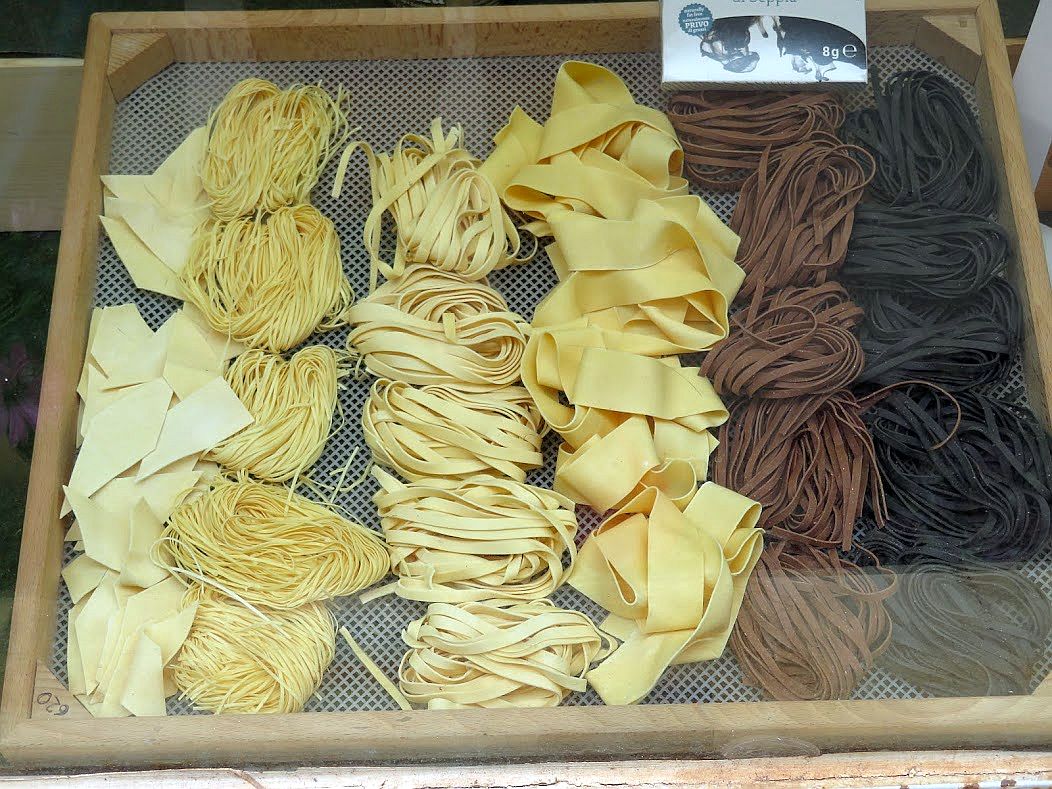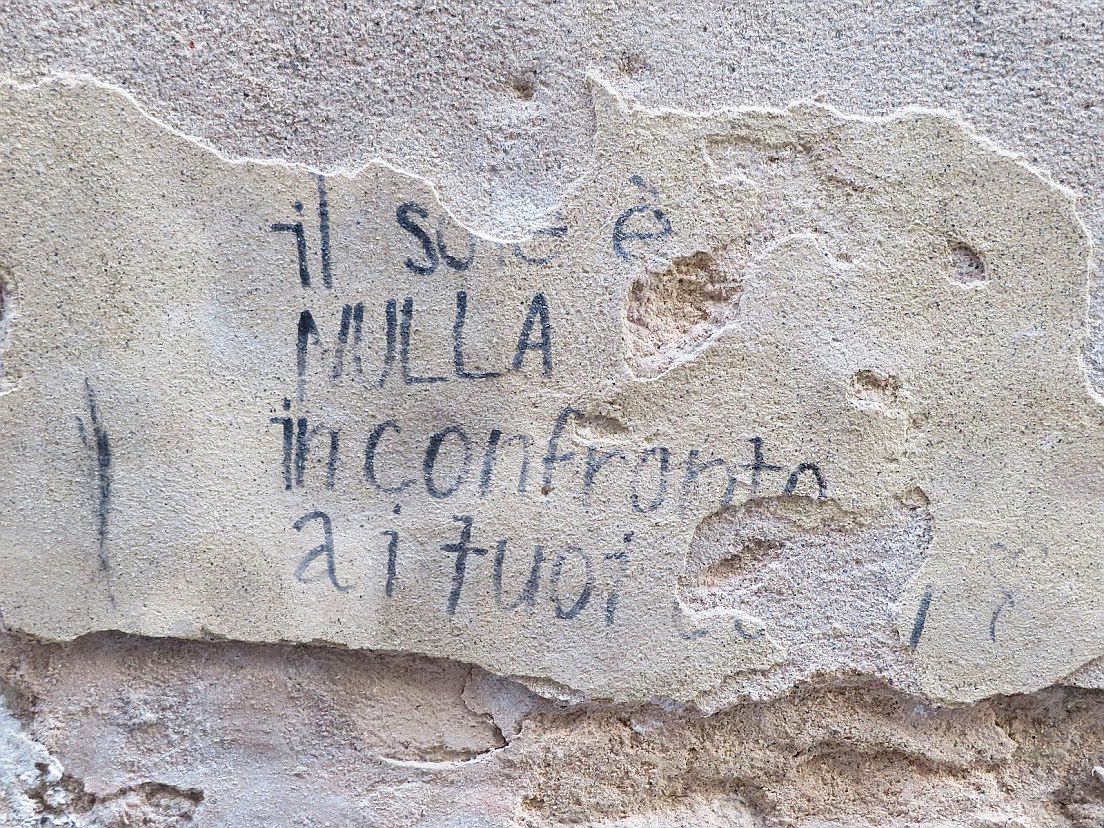
One of the best things about walking around Venice is that you are always discovering things, the littler, the better.
Here is a smattering of recent surprises, in no particular order. The important thing is that they made me smile.
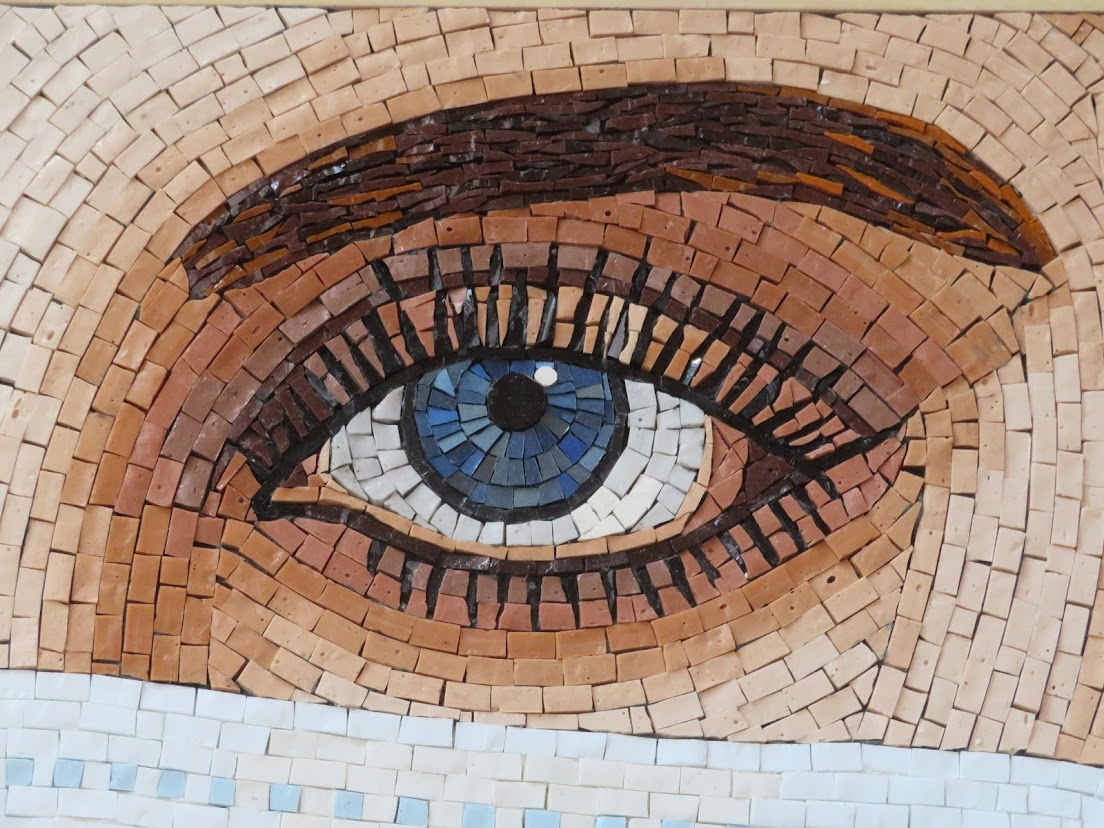
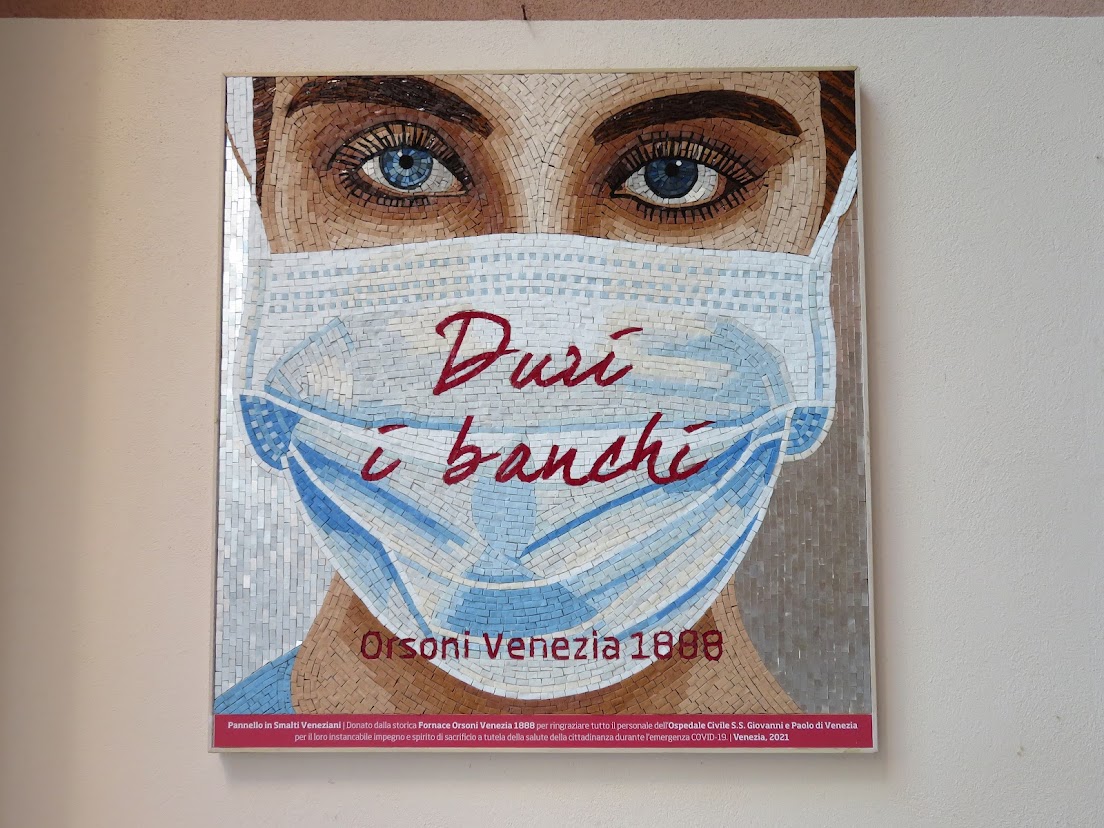
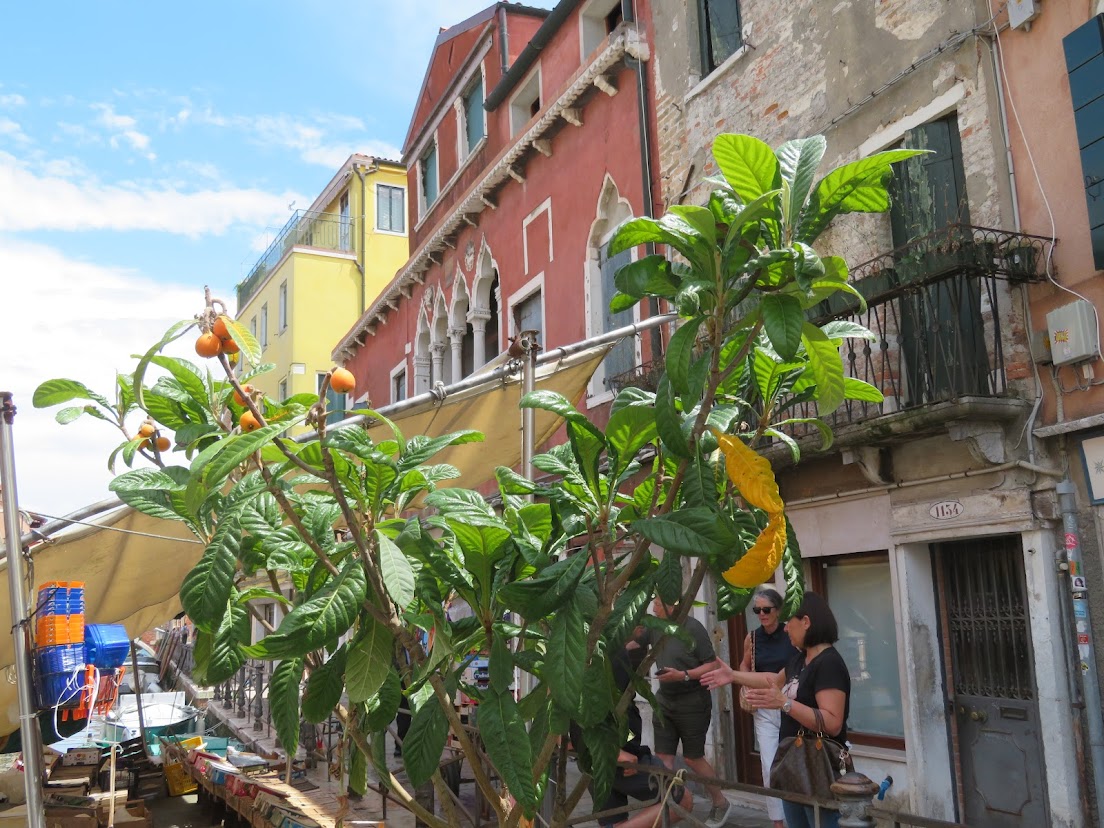
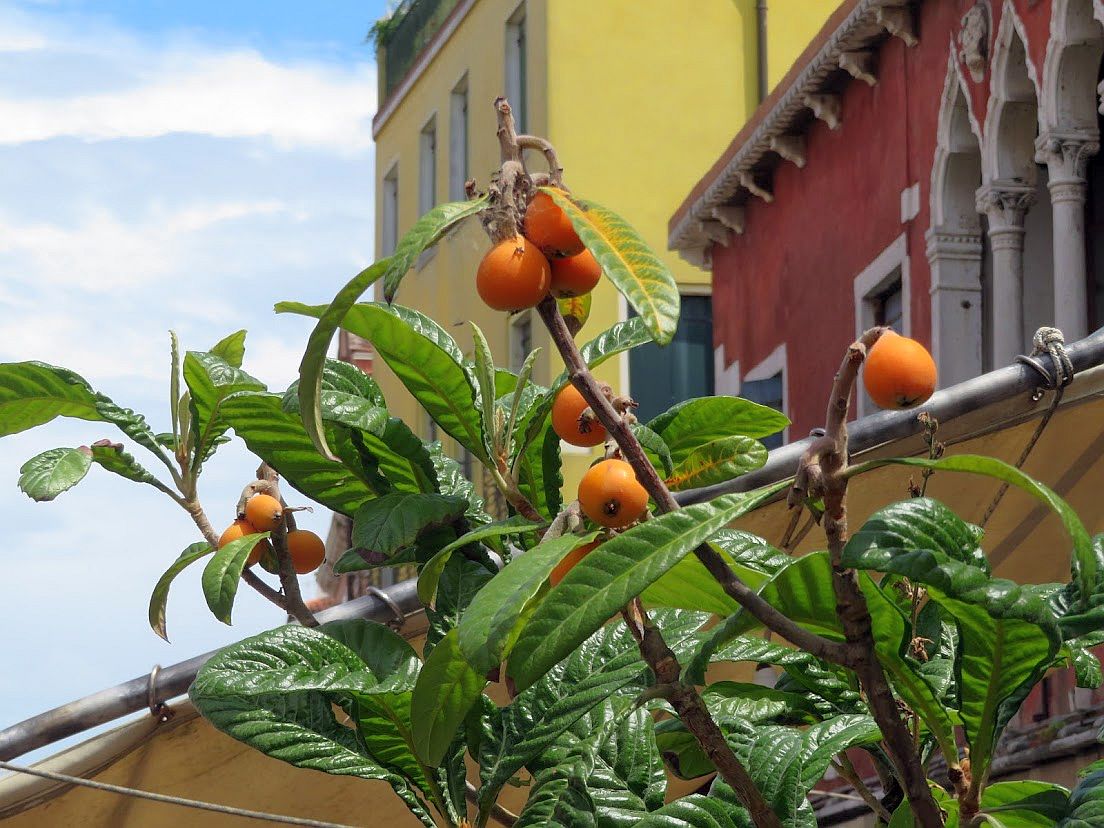
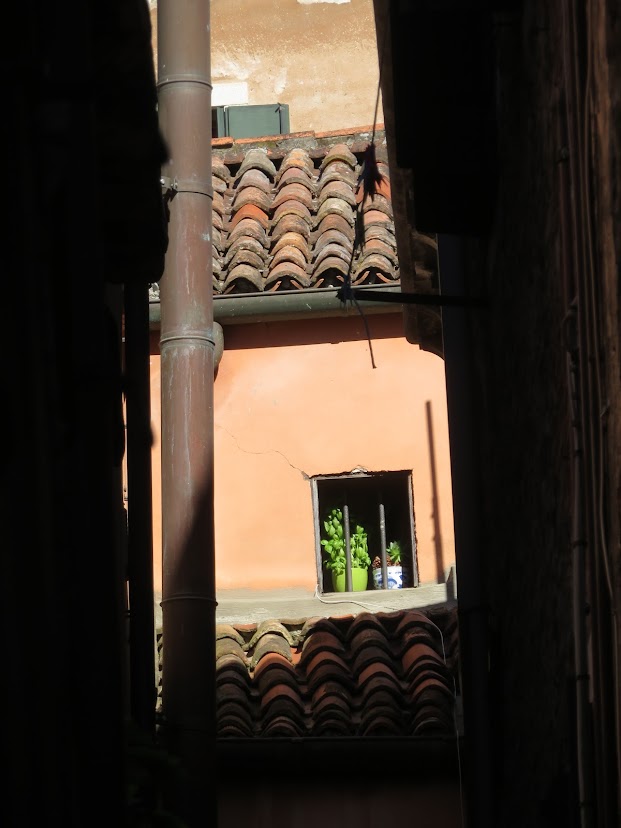
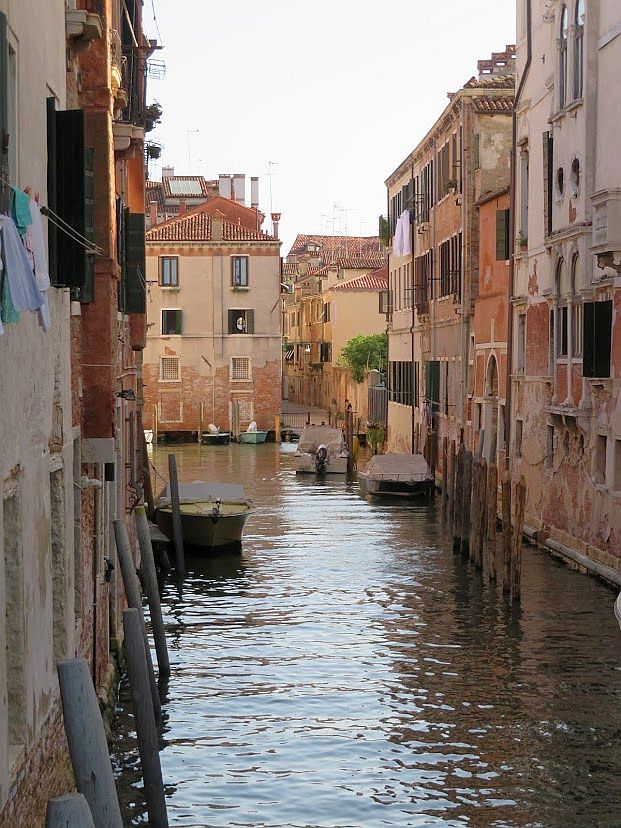
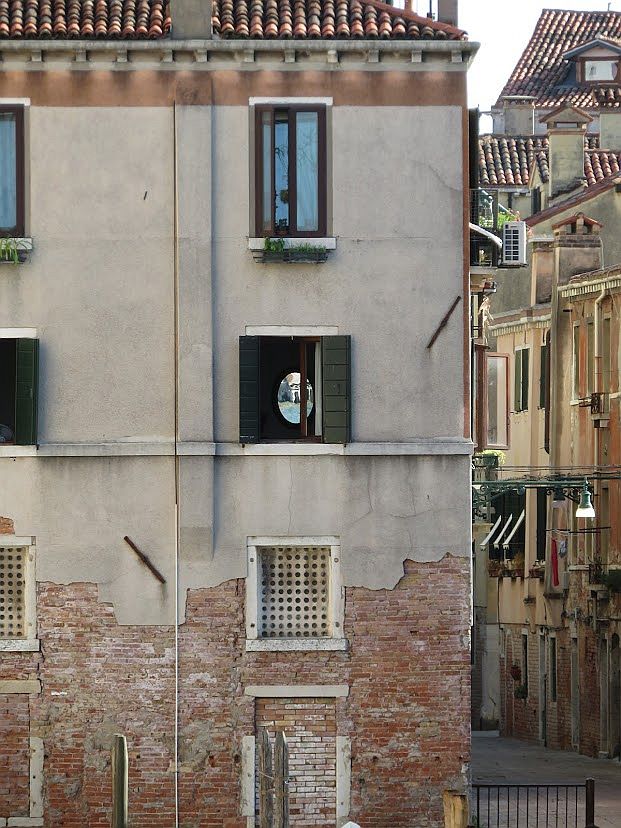
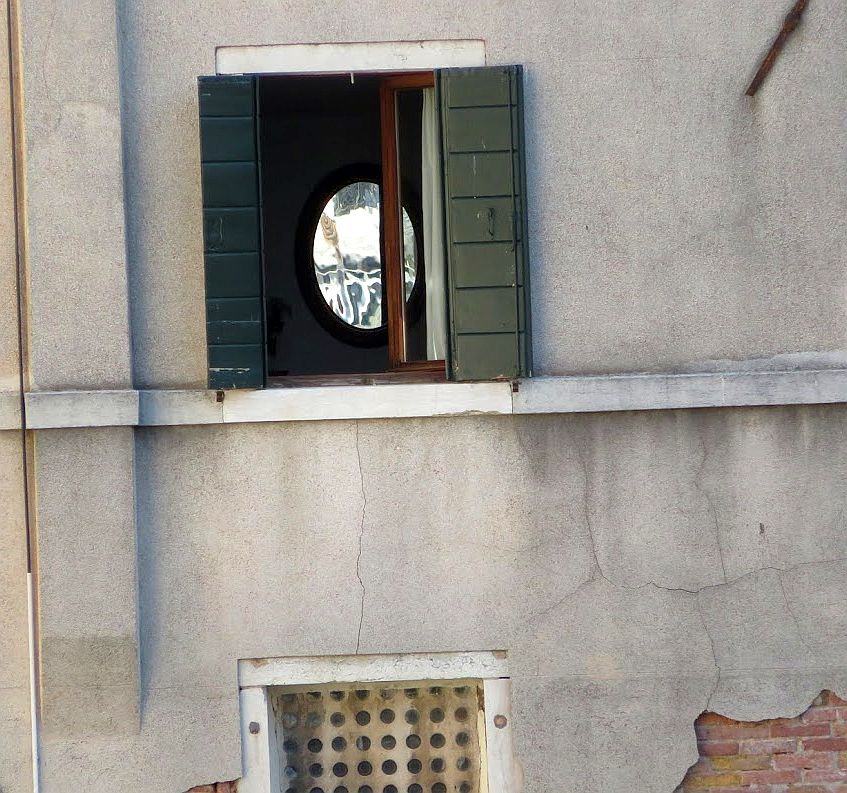
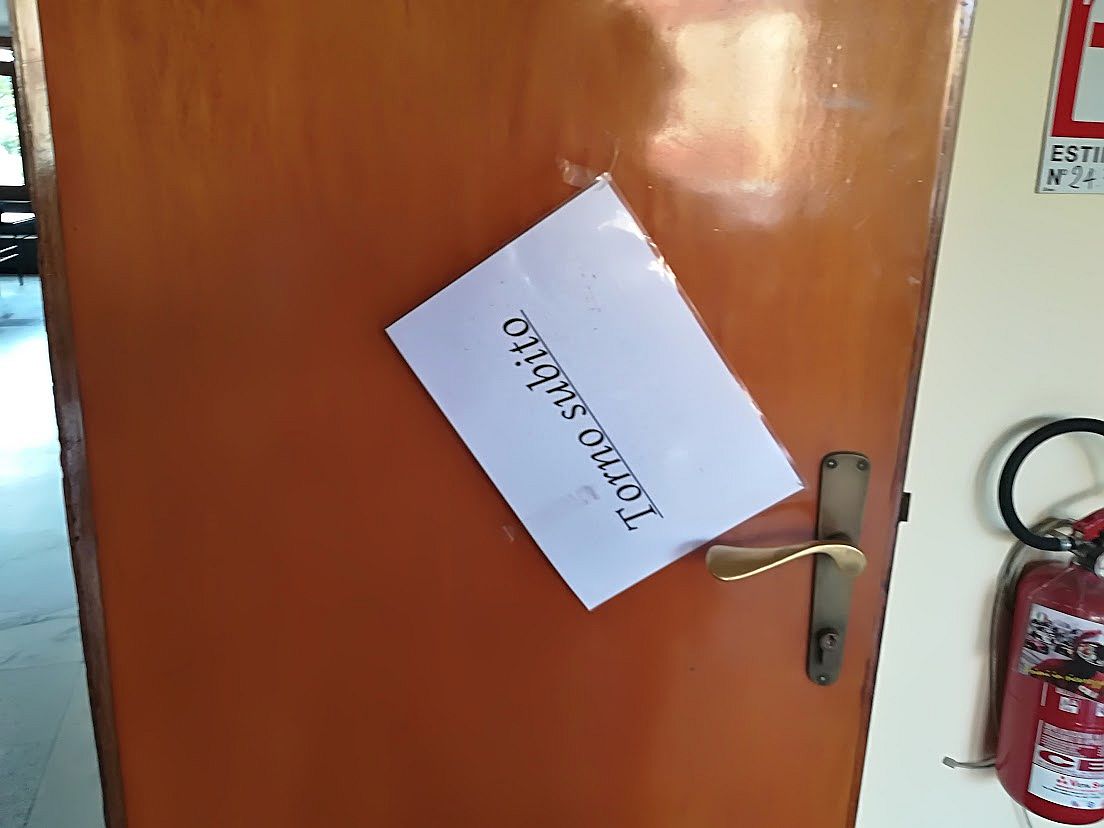


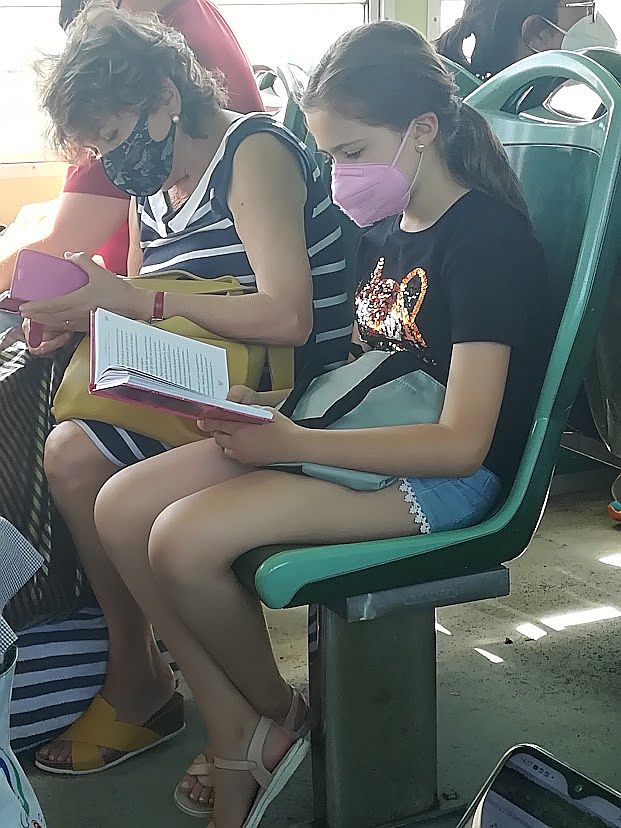
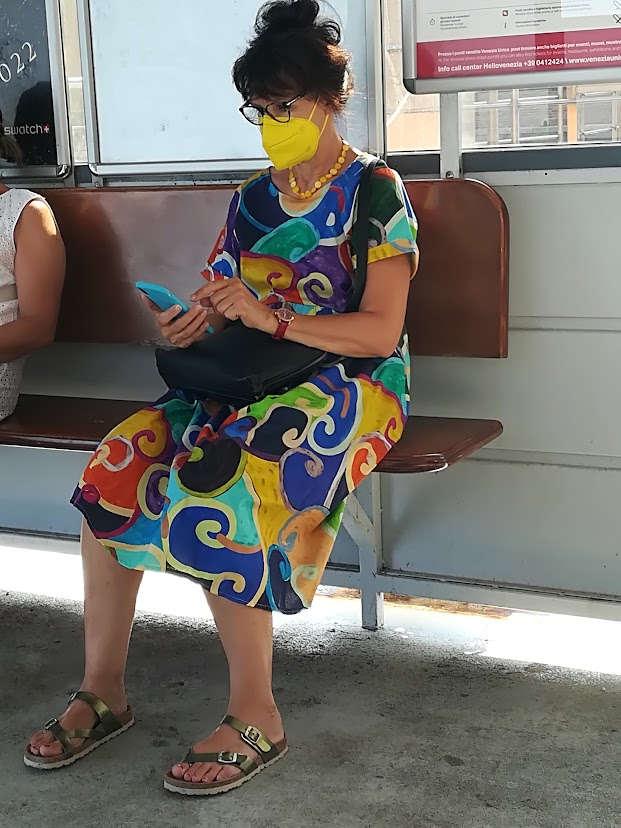


One of the best things about walking around Venice is that you are always discovering things, the littler, the better.
Here is a smattering of recent surprises, in no particular order. The important thing is that they made me smile.














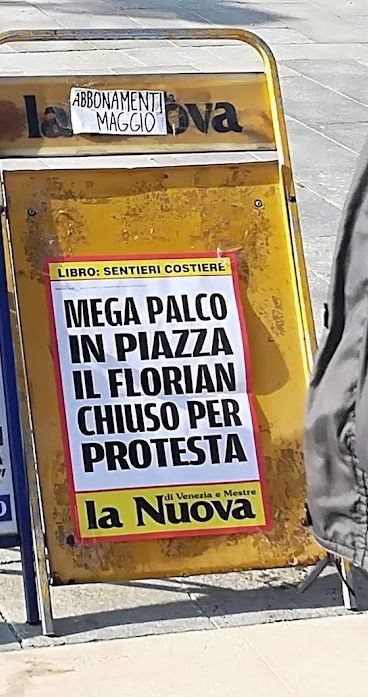
Some things deserve to be laughed at — laughter with a frisson of incredulity. Incredulity without the guffaws also works well. And Florian closing in protest is hilarious.
Florian is the jewel in the crown of the Piazza San Marco. Opened on December 29, 1720, it is certainly the oldest cafe extant in Venice, and in all of Italy; some sources claim it’s the oldest in the world, though Florian modestly denies it. It’s also extremely beautiful. History and elegance make such a lovely couple. Sipping your prosecco or Bellini or even a tiny cup containing three drops of espresso, a nibble of salmon, a delectable pastry, all brought to you on a silver salver, you can feel wonderfully, uniquely glamorous. Sitting in Venice! At Florian! Am I dreaming? Is this really me?

Then the bill arrives, and you have to start planning that second mortgage on your house. Coffee at the bar: 3 euros ($3.17). Seated: 6.50 ($6.85). A little plate of six (6) cookies? 13 euros ($13.71). Is the atmosphere adorned by the enchanting music rippling from the instruments of the quartet on their platform outside? Your conto will request your payment of 6 euros per person, even if you didn’t actually order it. Yes, for a concert it’s extremely economical.
I could go on, but my point is not how expensive it is; Florian can charge any price it wants and nobody is forcing you to go there.
My point is that they closed for a day to protest the “invasion” of the gargantuan stage set up for massive ceremonies in the Piazza San Marco. (More on the ceremonies later.) Florian strongly objects to all this construction encroaching on their territory, primarily because they were not consulted weeks in advance. The city government disputes the accusation of no consultation.
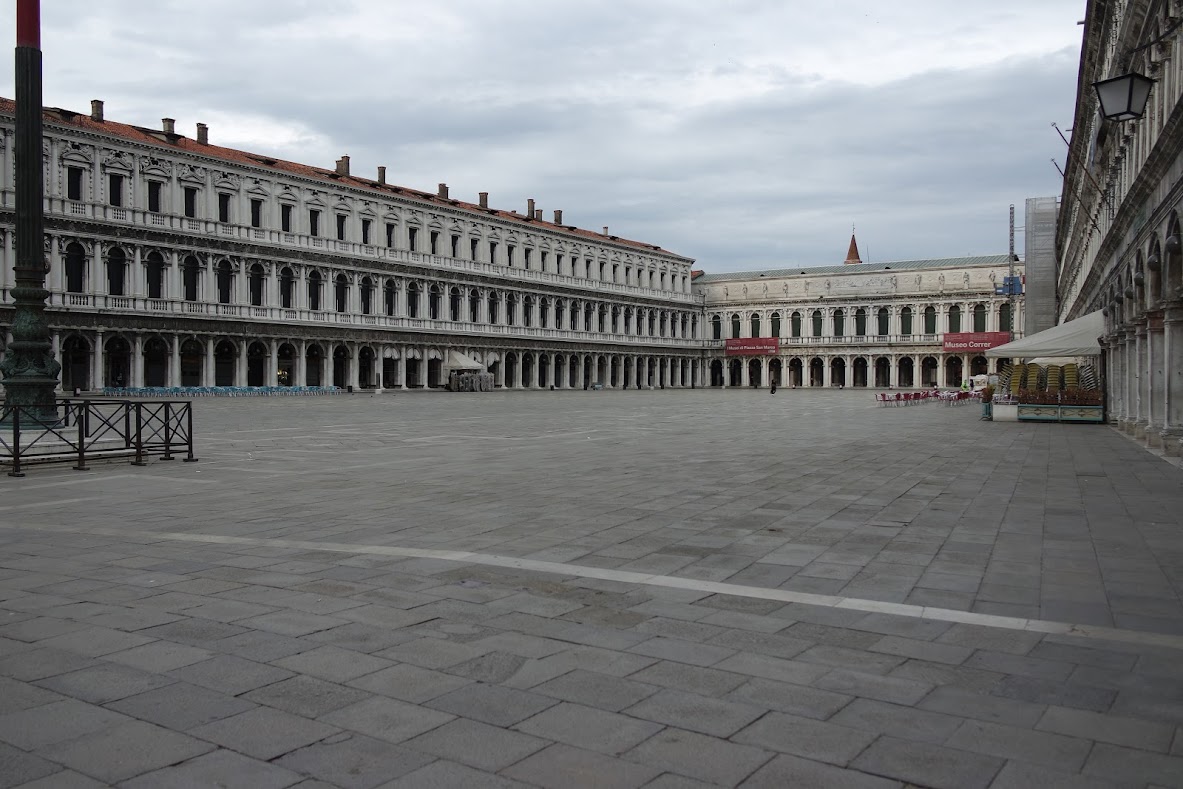
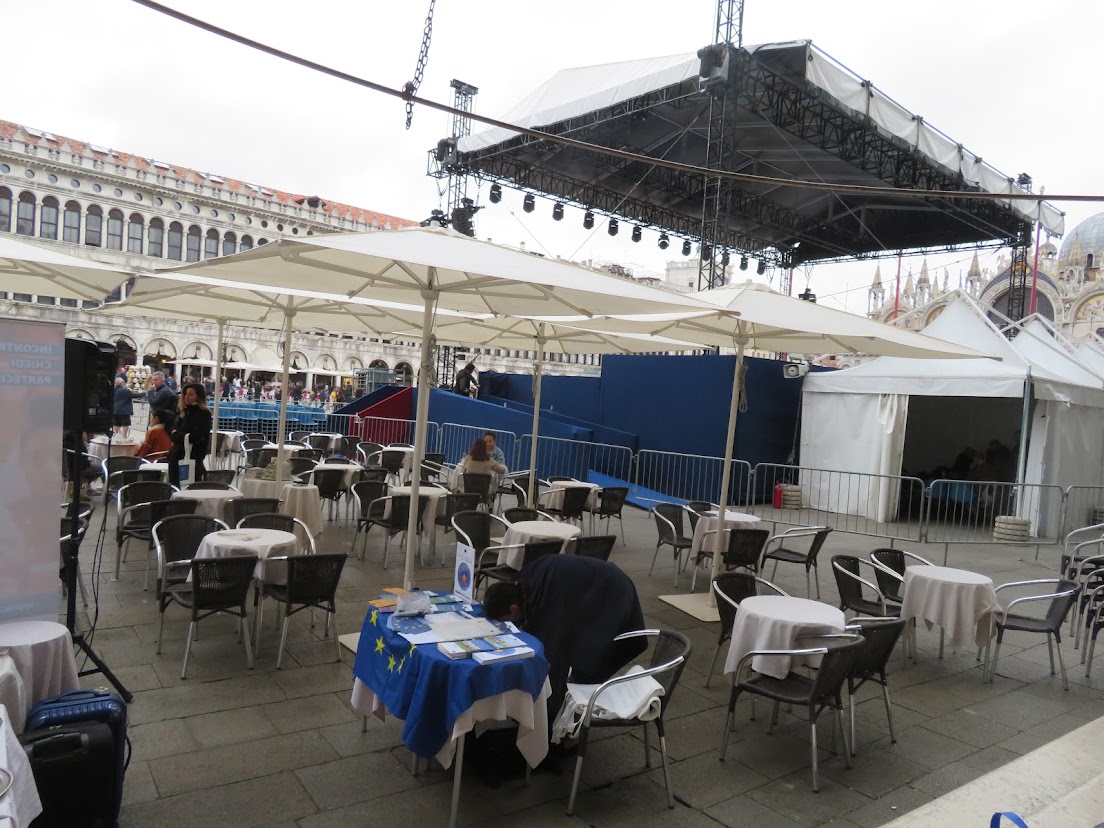
I could understand somebody protesting a situation that would dangerously and cruelly limit, if not eliminate, their income for a few days (April 29 – May 9, to be precise). But I don’t believe this is the case.
They complain that there is too much going on in the Piazza, and huge events such as Wednesday’s graduation ceremony for 800 students of the University of Venice, and the even huger rituals planned for today in honor of the Morosini naval school (details follow), are seriously invading their physical space and even their aura.
The occasion is the 60th anniversary of the school’s re-founding in 1961 (originally established in 1937, but interruptions such as war ensued). And while we’re all together, why not also conduct the requisite swearing-in ceremony by which the first-year class is rendered officially military. This year the second-year group will join in, as there was no oath-taking last year. There will be marching and saluting executed by the 150 cadets, undoubtedly abetted by detachments from other military branches. Did I mention that the president of the republic will also be there? Not to mention many past cadets, going back decades.
To return to the bur under Florian’s saddle, yes, there is an enormous reviewing stand, and yes, there will be big bleachers flanking it. It’s regrettable that these will degrade the scenery of the Piazza, to the detriment of the Florian fascination. But it occurs to me that even though this legendary cafe’, like all businesses that place tables outdoors, pays a tax for the public space they occupy, they don’t actually own that space. Which is to say that the Piazza San Marco doesn’t belong to them. In fact, you could make a good argument that Florian’s appeal does not lie principally in the Piazza, but in its own glorious rooms. If you take the Orient Express, are you really going to spend a lot of time looking out the window at the scenery?
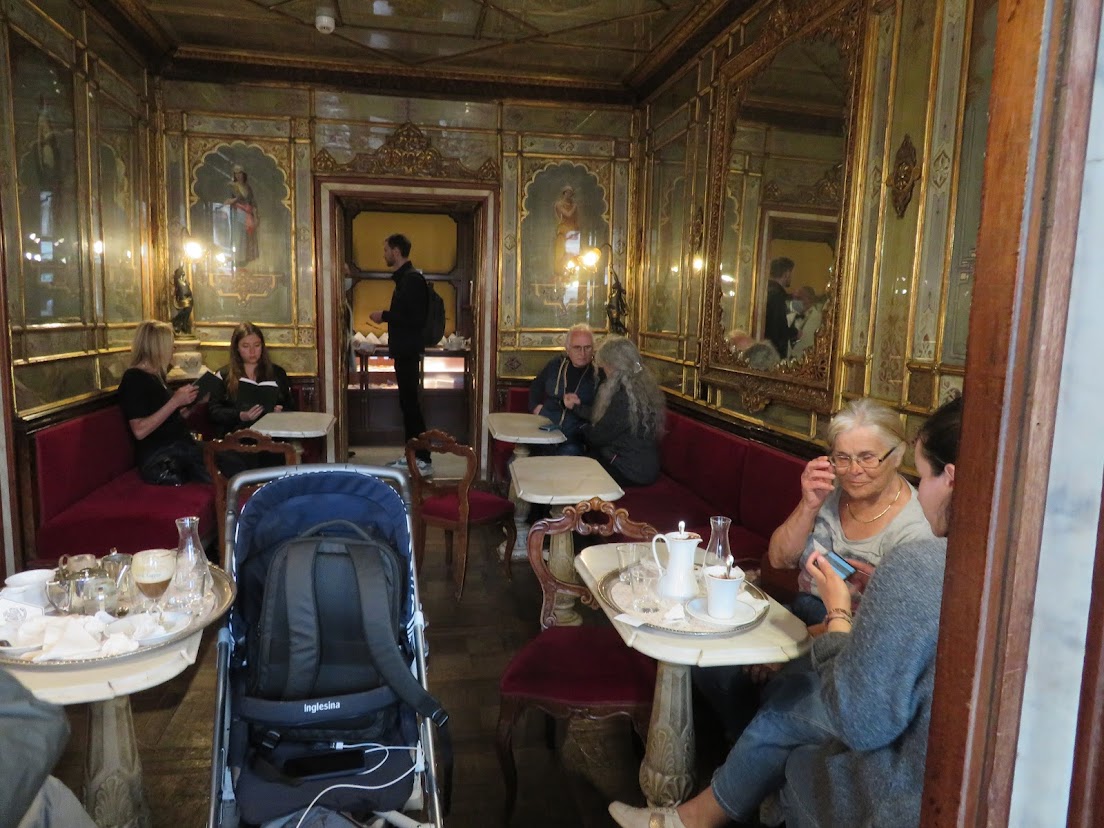
In any case, the Piazza San Marco has been the site of mass confusionary events for centuries. The interminable procession on the feast of Corpus Domini, the week-long market for the feast of the Ascension — stalls everywhere selling everything! — bear-baiting to entertain the Crown Prince of Russia in a Piazza surrounded by yes, bleachers filled with thousands of spectators, and so on. If anything big is going to happen in Venice, it’s almost certainly going to happen in the Piazza San Marco. Did nobody think to tell Florian?
Well, not according to them. They say they got barely 24-hours notice before the scaffolding began to go up, at which I wonder what difference it would have made to have had even 240-hours notice. The scaffolding is going up, and it will be coming down. See: “Ownership of Piazza,” above.
So here is what strikes me as hilarious about all this: What possible difference does it make to anyone except Florian if it closes for a day? I understand the desire to protest, but saying you’re going to close for a day to show how mad you are is kind of like when I was three years old and threatened to hold my breath forever if I didn’t get what I wanted. My mother basically said “Go right ahead,” and I did, and when I regained consciousness on the kitchen floor she was still standing over there, washing dishes or cutting vegetables or whatever she was doing. So much for my protest.
So a day without Florian, even though you can make it sound like something terrible, doesn’t even register on the Apocalypt-o-Meter. I think most of us can say we have other things to worry about.
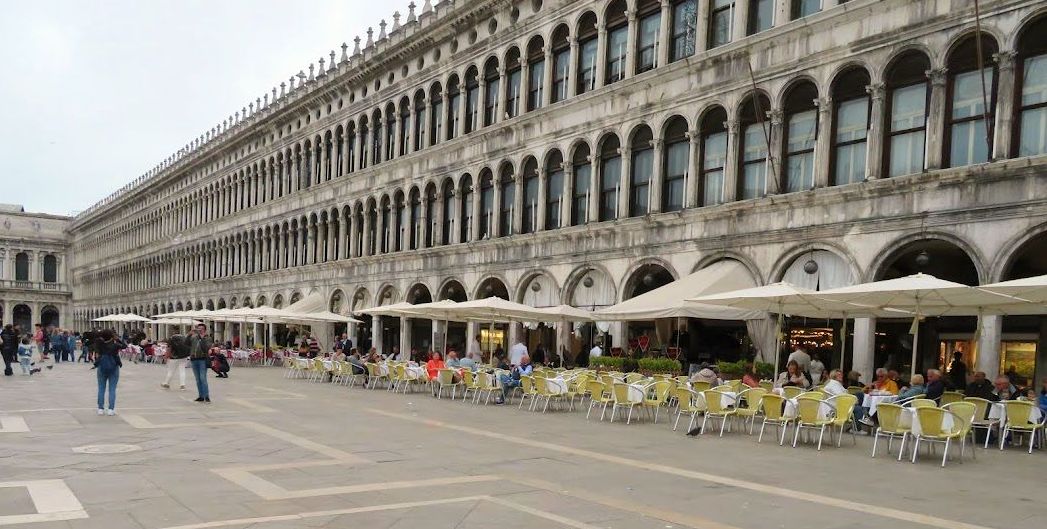
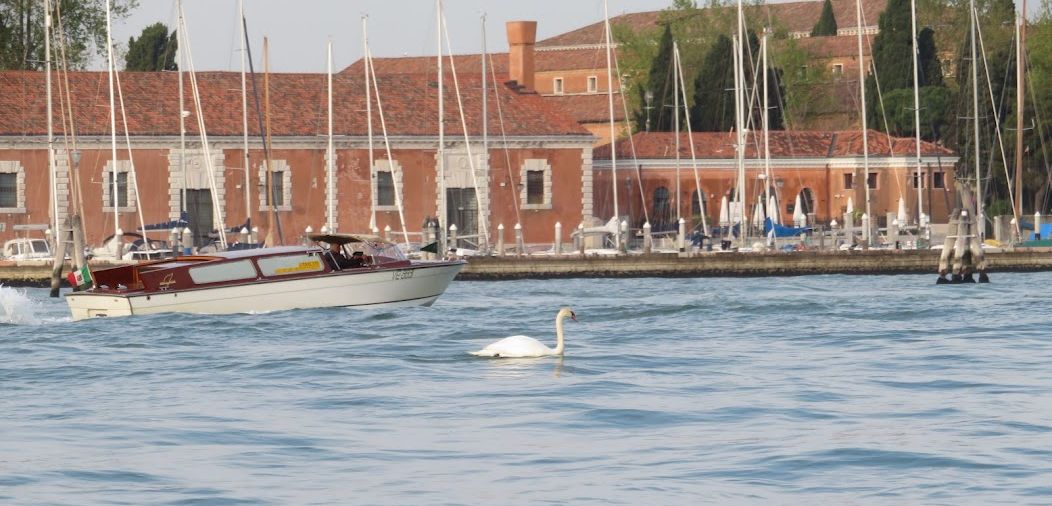
May 1 was a national holiday, here and in many other countries, and it’s generally known as International Workers’ Day. So in honor of workers everywhere, we also did not work that day. We went out for an early morning row, and were amazed to be met in the Bacino of San Marco by a very fine, and very unexpected, feathered friend.
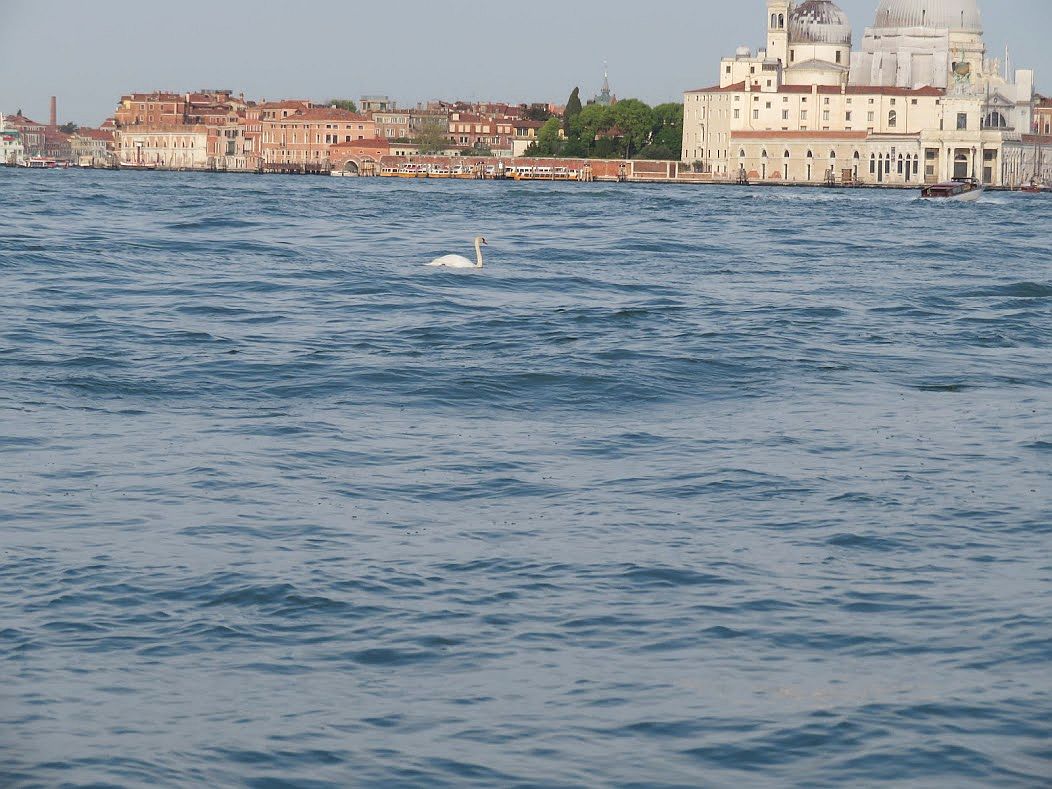
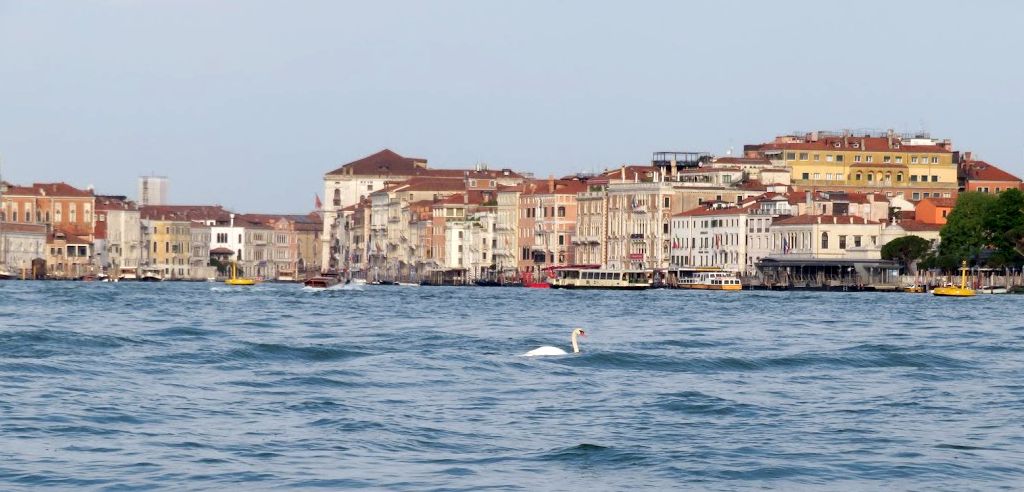
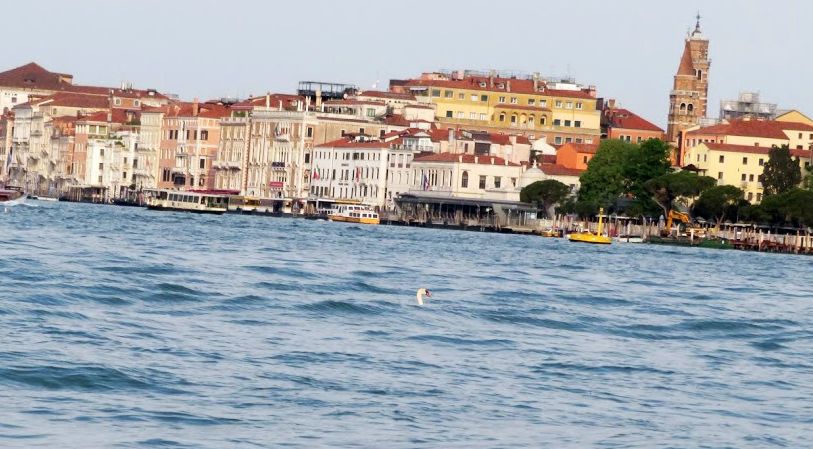
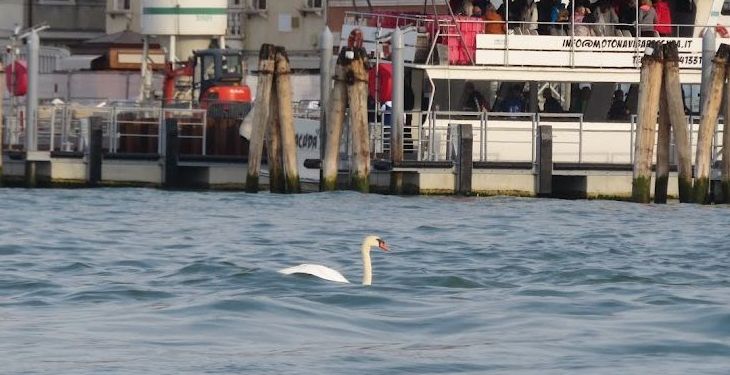
We have often seen a pair of swans in the northern lagoon, beyond Torcello, and also on the Brenta river near Malcontenta; one time we counted nearly 50 floating in the distance near Sant’ Erasmo. Lino told me that when he was a lad, some birds that we now commonly see in the city, such as cormorants, egrets, and seagulls, never came to town. You’d see them only in the distance, he says, if you saw them at all. Now they’re everywhere.
But the swans weren’t to be seen anywhere. About 35 years ago, Giampaolo Rallo, now president of the Mestre Pro Loco, then a naturalist at the Natural History Museum, noticed that there wasn’t a swan to be found in the lagoon, “not even if you paid it,” as one account put it. So he got what he calls “this crazy idea” to bring back the swans. On April 13, 1984, the World Wildlife Fund (WWF), together with the Gazzettino, launched a drive to find individuals willing to sponsor (fancy word for “pay for”) pairs of swans — not a small contribution, considering that a pair cost the equivalent of $315 today.
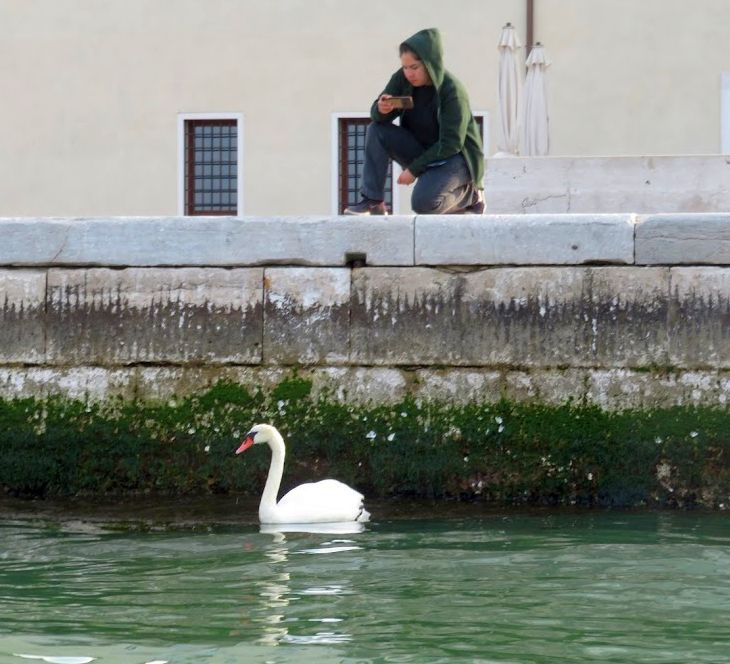
Over a period of two years, up to one hundred couples were acquired in the Netherlands and placed in the “fish valleys” of the southern lagoon. “It was a great cultural work,” Rallo explained to a journalist from La Nuova Venezia in 2019, “because we had to teach the respect of all the great waterbirds — I’m thinking also of the flamingoes. But there was real enthusiasm in the city for this initiative and there were important signs, such as the participation of Federcaccia Venezia” (the hunters’ association) “which bought a pair and made their volunteers available to watch over the swans to prevent anyone from disturbing or wounding them.” Who would hurt a swan? Well, hungry people a few generations back had no problem with trying to get these spectacular creatures on the table.
Today there are a thousand swans in the lagoon, and are sometimes seen even in Mestre’s modest waterways. A breeding pair named Silvia and Peter live near the lagoon at Caorle, and are awaiting the hatching of their eleventh brood of cygnets.
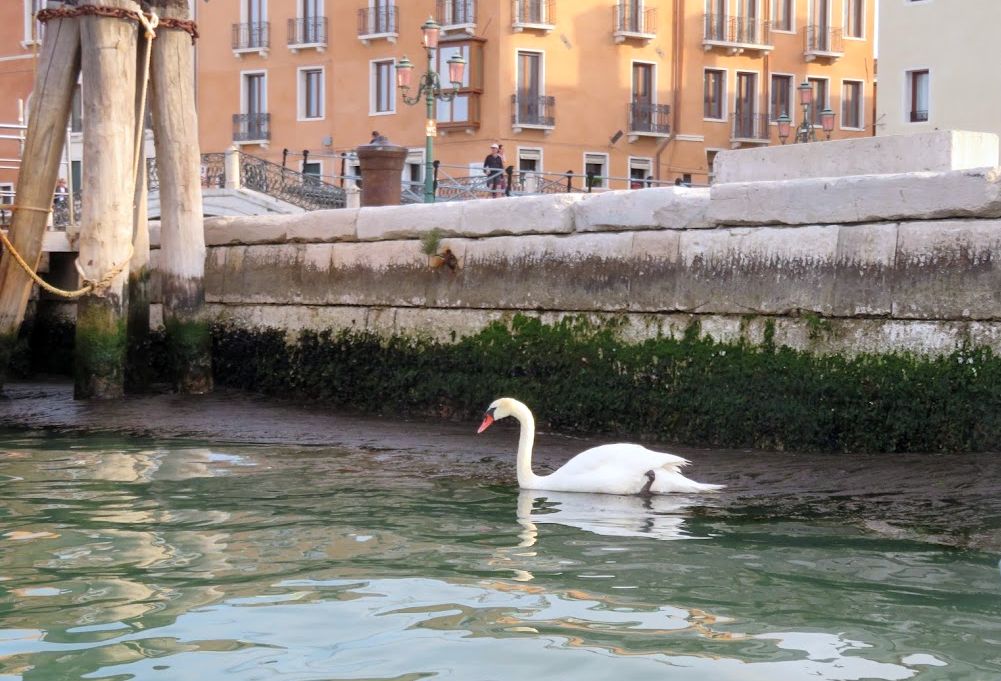
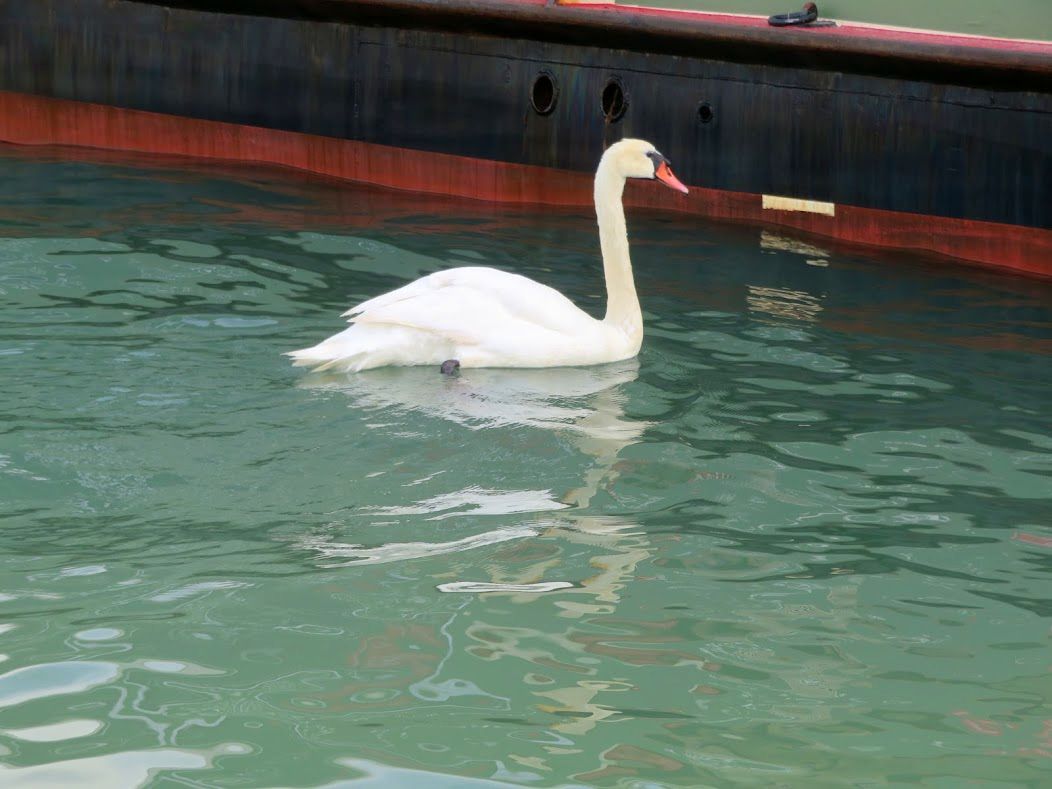

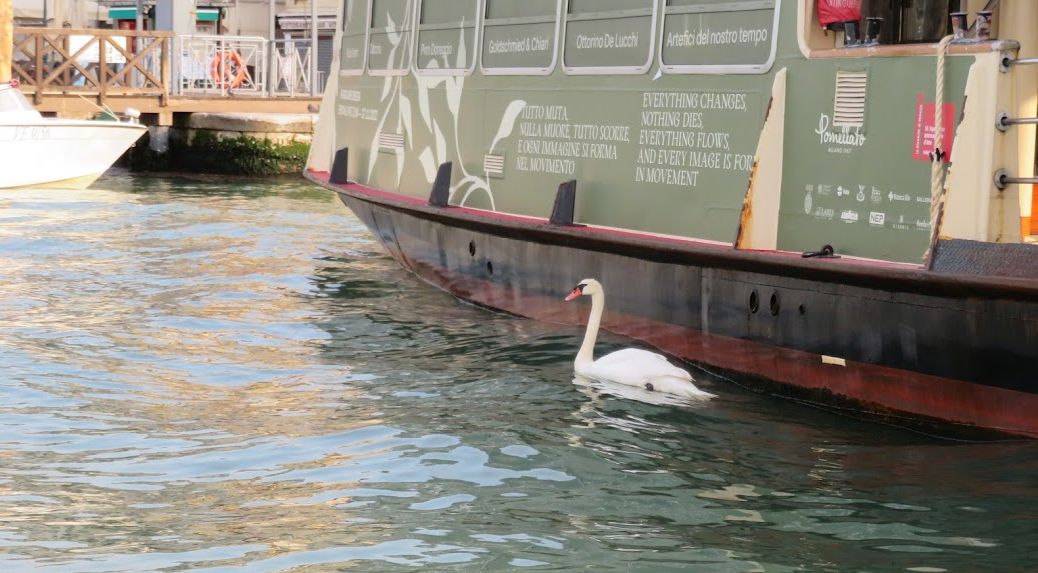
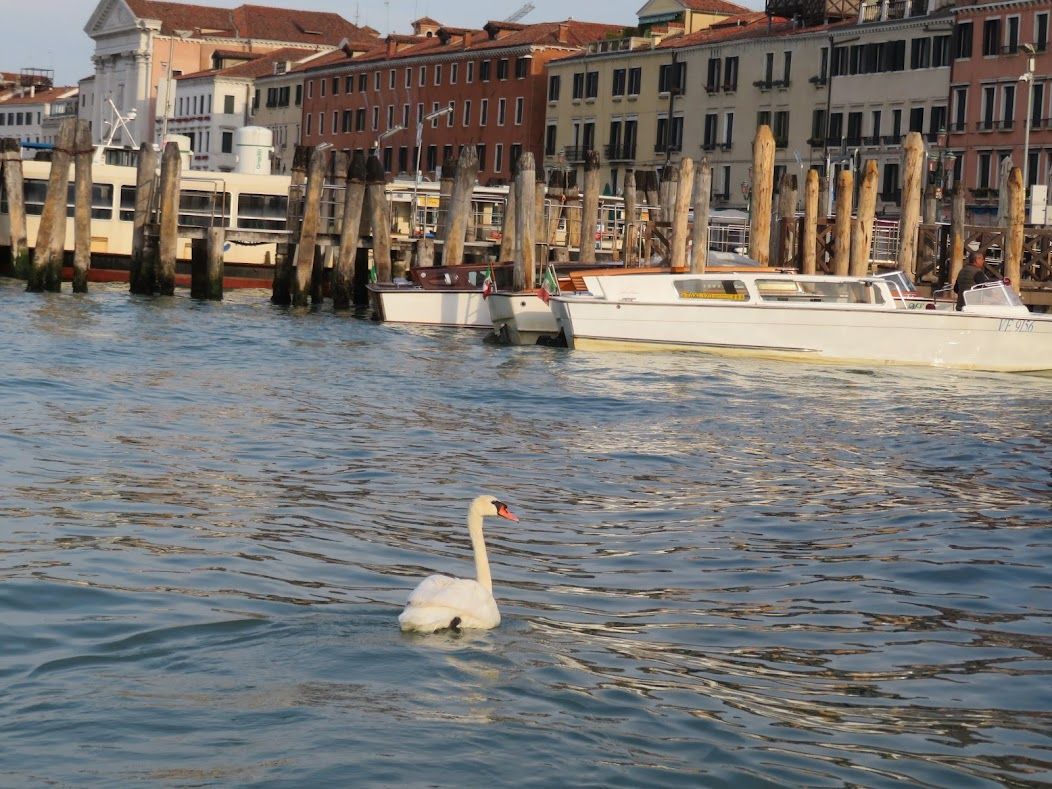
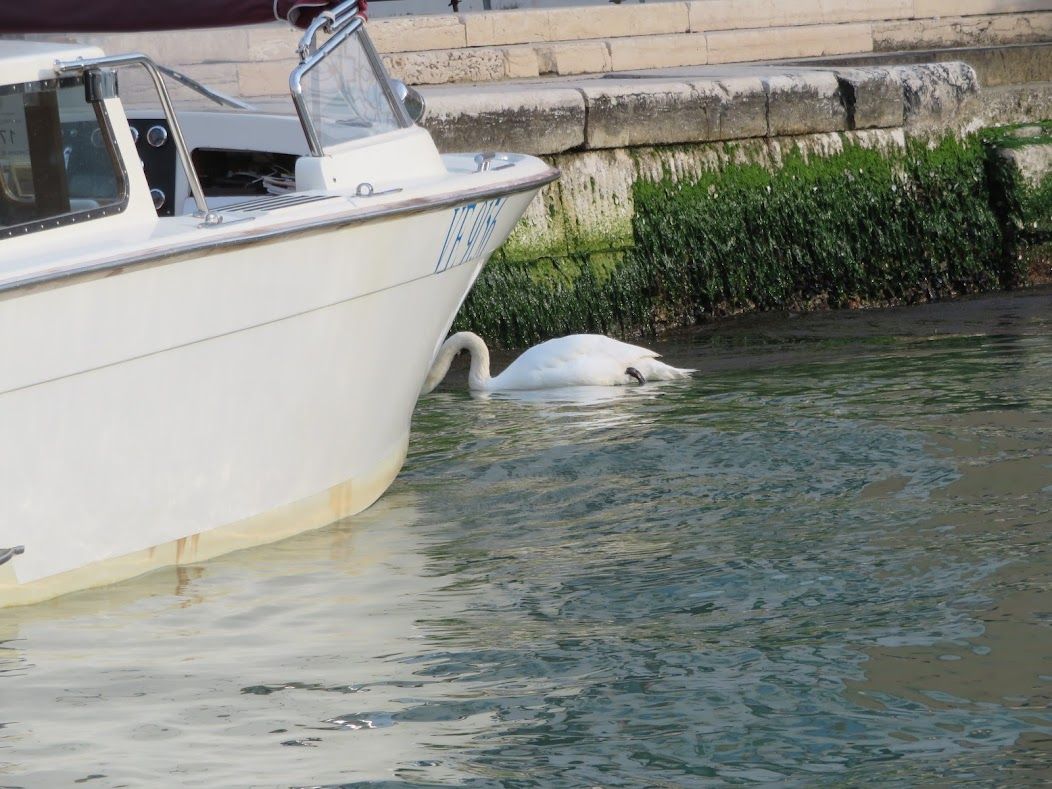
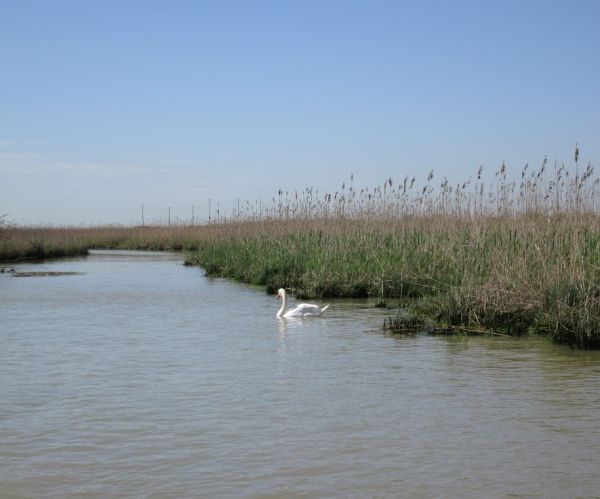
My most powerful memory of swans was a moment that was not, and anyway could not have been, photographed. It all happened so quickly.
Years ago, we were out rowing near the island of Santo Spirito on a deep grey morning in winter. Suddenly a trio of large birds flew toward us — three swans — flying so low it seemed we could touch them.
I had never seen swans flying, much less so near. As they passed overhead, their long graceful necks undulated slightly, and a barely discernible murmuring sound came from their throats.
Swans may be beautiful when they’re doing nothing, but when they fly they are magic.
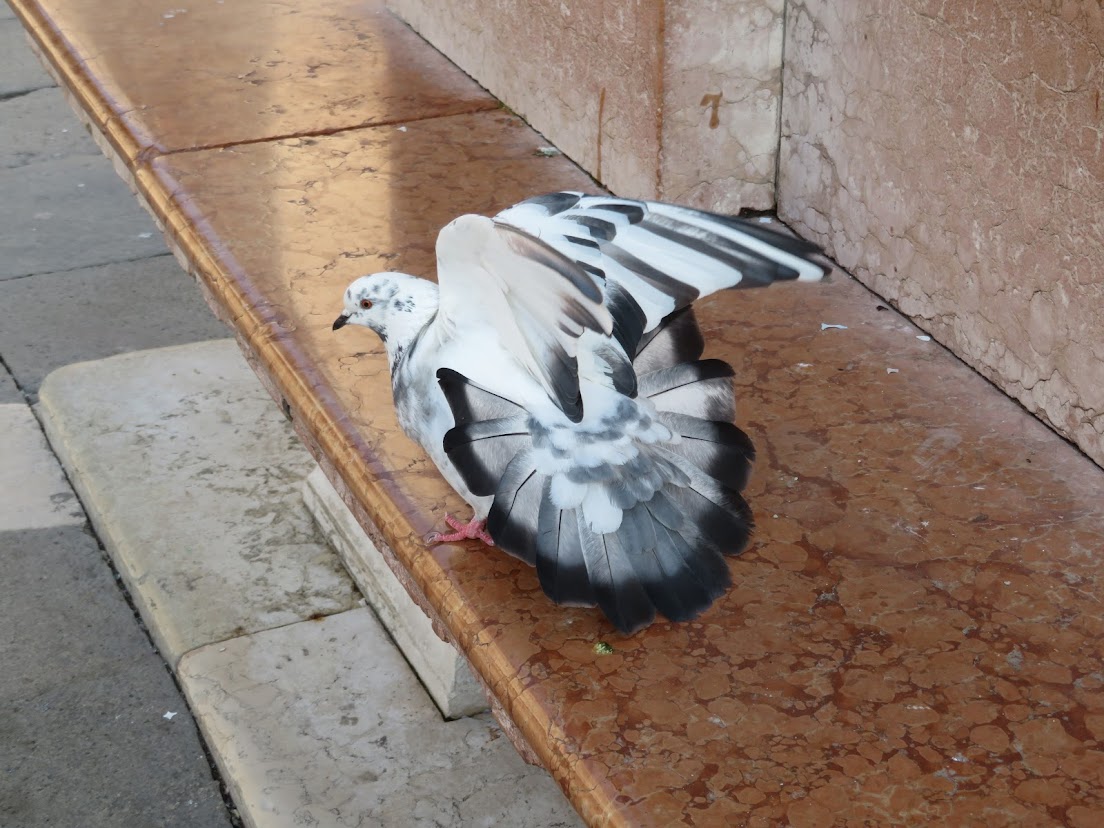
A brief article in the Gazzettino Saturday added a few details about this artefact, which I pass along.
It’s called “Castello Cube.” I hadn’t realized it had a name, it seemed such a generic object. Not that the name is any less generic.
The creator goes by the nom de guerre Niclas Castello. Now I begin to comprehend. And it is being shown in Castello! It’s almost like destiny.
His real name is Norbert Zerbs. I myself would have totally kept this name. Be proud of your heritage, Zerbs!
The cube sat on the riva Ca’ di Dio for 24 hours, it says here, so that would also explain the security guards. There were ten of them.
It weighs 186 kilos (410 pounds) of 24-carat 999.9 fine gold. I’ll admit that for some reason I didn’t want this to be true. I was telling Lino that it was probably an empty cube made of iron sheets covered with gold leaf. Nope. It is precisely what it appears to be: A block of solid gold.
Never before in history has this much gold been worked into one artwork.
The value of this mass of metal is about 12,000,000 dollars.
Zerbs’s net worth is listed at 51,000,000 dollars.
I notice how many facts about this object have to do with quantities. Don’t know why this seems to fascinate people. A man in Alaska told me that a tourist looking at Denali once asked him how much it weighed.
It was displayed in Central Park in New York City last February.
An art historian named Dieter Buchhart made the following declaration (I translate): “It is a conceptual work that seems to have arrived from another world and now is standing on the paving-stones of Venice, without a pedestal.”
I’m as keen on conceptual works as the next person, even if the concept eludes me, but here’s a concept: By all means bring us a cube of gold that seems to have arrived from another world. Just stop talking drivel.
“The artwork is exhibited in public places so that it is accessible to everyone,” said another expert, “and people have the opportunity to rediscover art in the open space.”
I’ll tell you what — you’d need 186 kilos of self-confidence to put something you call art into an open space in a city that is composed almost entirely of art. I might discern something artistic about it if it were standing, say, in an acre of alfalfa, or drifting on a raft down the Monongahela river. But placing an object purporting to be art in Venice takes nerves of tungsten carbide.
Anyway, it’s gone now, continuing its quest to find a pedestal.
